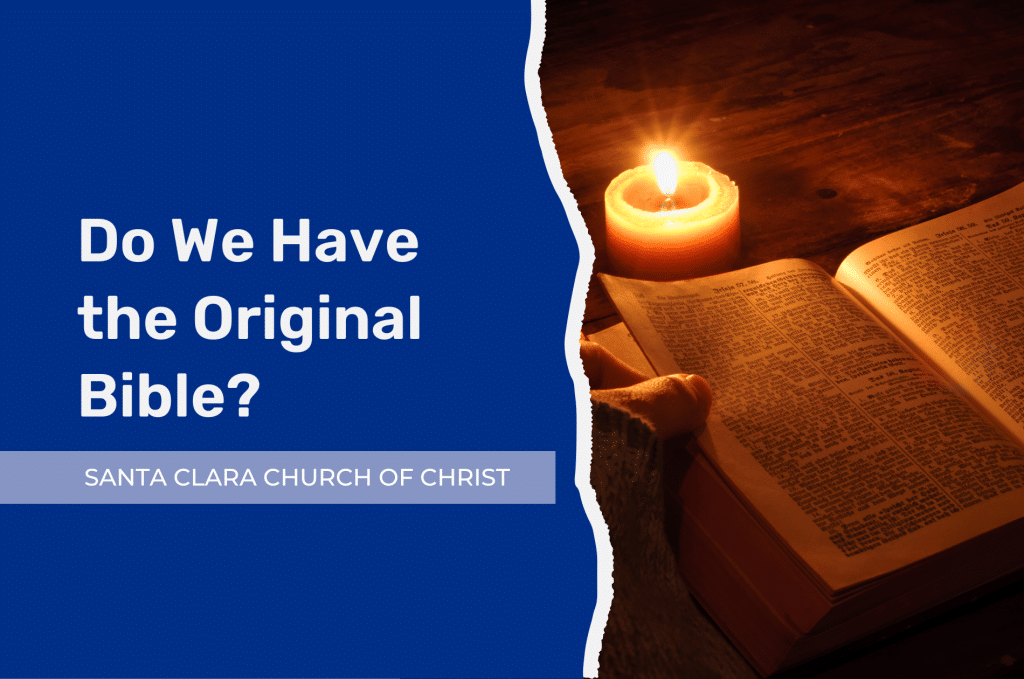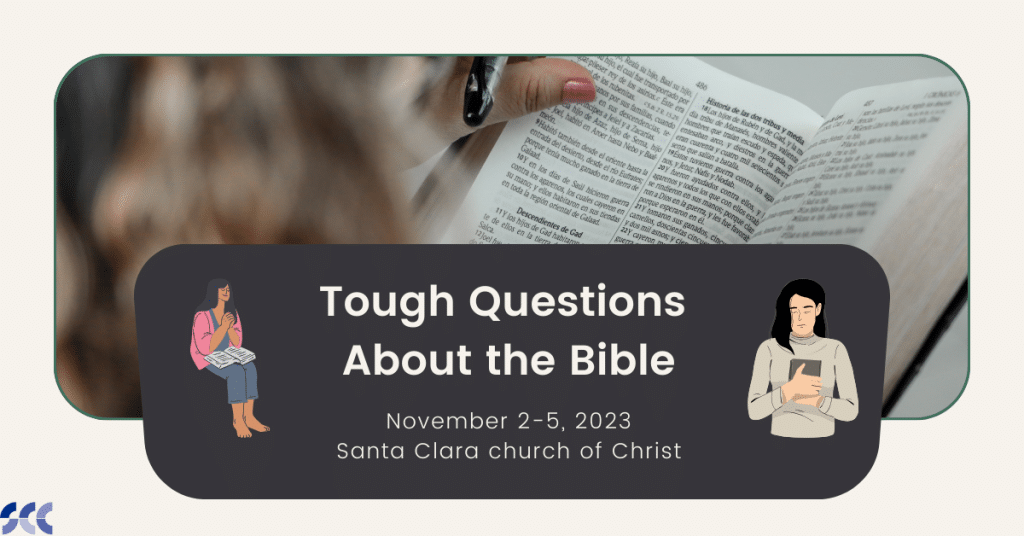How do we know the earliest scribes faithfully reproduced the text in the earliest copies?
For starters, there was a long tradition, established from ancient times while the Bible was still being revealed, of total respect for the written Word of God. There were to be no additions or deletions (Rev. 22:18-19; Deut. 4:2: 12:32).
In this article we look at some of this evidence.
Internal Verification
Apart from the external evidence from church history, Biblical writers themselves recognize the divine authority in each other’s writings. Thus, Daniel recognizes Jeremiah (Dan. 9:2), Jeremiah recognizes Micah (Jer. 26:18), and the New Testament recognizes “Moses and the prophets” (Lk. 16:29; Mt. 17:3-5).
Peter acknowledges the writings of Paul and equates them with “the other Scriptures” (2 Pet. 3:16). In 1 Timothy 5:8, Paul cites both Deut. 25:4 and a saying of Jesus (cf. Mt. 10:10), introducing both quotations with the words, “For the Scripture says…”
Jesus and the apostles recognize the authority of the Old Testament. For Jesus, the Old Testament was “scripture,” “the word of God” (Mk. 7:13), and “the law” of God (Lk. 10:26). When citing a passage from the Psalms, he inserts the words, “and Scripture cannot be broken” (Jn. 10:35).
In the Sermon on the Mount, he affirms his respect for previous revelations of God: “Do not think that I have come to abolish the Law or the Prophets; I have not come to abolish them but to fulfill them. For truly, I say to you, until heaven and earth pass away, not an iota, not a dot, will pass from the Law until all is accomplished” (Mt. 5:17-18).
Oftentimes he introduces an Old Testament saying with the words, “It is written…” (Mt. 4:4, 6, 7).

Evidence from the Early Church
Christians from the early centuries of church history, even outside the New Testament, generally display a very high regard for Biblical authority.
This is consistent with the warning in Revelation 22:18-19 not to “add to” or “take away” from the holy contents. Inculcating this kind of respect for the Word of God would have precluded tampering in the scribal transmission of the documents.
- “As all gold, whatsoever it be, that is without the temple, is not holy; even so every
notion which is without the divine Scripture, however admirable it may appear to some,
is not holy, because it is foreign to Scripture.” (Origen, Hom. 25 in Matt.) - “Whence comes this tradition? Does it descend from the Lord’s authority, or from the
commands and epistles of the apostles? For those things are to be done which are there
written… If it be commanded in the gospels or the epistles and Acts of the Apostles,
then let this holy tradition be observed.” (Cyprian, Ep. 74 ad Pompeium) - “The Catholic Christians will neither speak nor ensure to hear anything in religion that is
a stranger to Scripture; it being an evil heart of immodesty to speak those things which
are not written.” (Athanasius, Exhort. Ad Monachas) - “How can we use those things which we do not find in the Holy Scriptures?” (Ambrose,
Ambr. Offic., 1:23) - “We ought not to seek those things that are passed in silence, but rest in the things
which are written.” (Theodoret, Gen. Q.45)
The Bible as a Book of Covenants
The most striking feature of the Bible’s contents is the division between the Old Covenant, or Testament, and the New Covenant.
Covenants contains specific terms and stipulations, so that once parties strike a deal and formalize the agreement, the conditions are not so easily altered after-the-fact. If this is true in human contracts, it is even more relevant when the counterparty is God.
The apostle Paul makes the same point when discussing the relationship between the Abrahamic covenant and the Law of Moses: “To give a human example, brothers: even with a man-made covenant, no one annuls it or adds to it once it has been ratified… This is what I mean: the law, which came 430 years afterward, does not annul a covenant previously ratified by God, so as to make the promise void” (Gal. 3:15, 17).
We should not pass over these words lightly: “No one annuls it or adds to it once it has been ratified.” Like the laws of the Medes and Persians alluded to in the Old Testament, “it cannot be revoked.” Moreover, when we are dealing with God, “there is no variation or shadow due to change” (Ja. 1:17).
We should contemplate long and hard “the unchanging character of his purpose” (Heb. 6:17). In fact, the previously cited verse is found within a paragraph that underscores God’s covenant promises and his oath to Abraham (Heb. 6:13-20).
The New Covenant is replete with attitudes as well as actions expected of God’s people. There is a very specific plan of salvation, details for personal life, and a blueprint for the mission and public worship of the church. All of these components are part of our “contract” with God.
From ancient times, God’s people have known that if they take the promised blessings seriously, they should give equal attention to the terms and conditions. Consequently, early Christian scribes understood the authoritative nature of the message they were copying – no additions, no deletions, no tampering!

Evidence Regarding the Transmission of the Old Testament
In modern times, we organize the Old Testament into five categories: 5 books of Law (the “Pentateuch”), 12 books of History, 5 books of Wisdom and Poetry, 5 Major Prophets, and 12 Minor Prophets. From ancient times, however, Jews organized the same books into three sections, as follows:
- Law (torah):
- Genesis, Exodus, Leviticus, Numbers, Deuteronomy
- Prophets (nevi’im)
- Former Prophets (Joshua, Judges, Samuel, Kings)
- Later Prophets (Isaiah, Jeremiah, Ezekiel, 12 minor prophets)
- Writings (ketuvim)
- Psalms, Job, Proverbs, Ruth, Song of Songs, Ecclesiastes, Lamentations, Esther, Daniel, Ezra, Nehemiah, Chronicles
Tanakh = Ta + Na + Kh (= the Hebrew term for the Jewish Bible, or Old Testament)
One might say that in the three sections, the LORD is doing three things:
- Law – God teaches us
- Prophets – God shows us through history and preaching
- Writings – God stirs us with examples of how faith works in the real world
Interestingly enough, the first-century Jewish historian, Josephus, alludes to the three sections.
Jesus does as well, in Luke 24:44 – “Then he said to them, ‘These are my words that I spoke to you while I was still with you, that everything written about me in the Law of Moses and the Prophets and the Psalms must be fulfilled.’” (He calls the third part, “the Psalms,” after the name of the first and most prominent book in the series).
Jewish scribes had a process for copying the text that reflected this total respect for authority. Every copy of every manuscript was painstakingly written out by hand. In order to prevent scribal errors in synagogue copies, the following rules were adopted:
- Each scribe would make sure his reed pen functioned well by dipping it in ink, writing “Amalek,” and then crossing it out (cf. Deut. 25:19).
- Parchments had to be made of clean animals (kosher), and feather quills from clean birds. The ink must be black and made to specification.
- No word or even letter could be written from memory. A scribe must have another scroll before him and pronounce every word out loud before copying it.
- Before writing the name of God, a scribe must wipe his pen and say, “I am writing the name of God for the holiness of his name.”
- Every letter had to have some space around it. If one letter touched another, or if any defect occurred via hole, tear, or smudge, the scroll was invalidated.
- Each column must have no fewer than 48 nor more than 60 lines, and must be identical to the manuscript from which it was copied.
- Within 30 days of completion, and editor would review the manuscript, counting every letter and word. He would also check to make sure the middle word on each page matched the one from the manuscript being copied.
- Up to three mistakes on any page could be corrected within 30 days. If more mistakes were found, or remained uncorrected within 30 days, the entire manuscript was burned. If a single letter was added or left out, the manuscript had to be fixed or buried.
Unfortunately, most good Hebrew manuscripts of the Old Testament date from the Middle Ages. However, these can be cross-checked with the following sources:
- Copies of the Septuagint, or Greek translation of the Hebrew Scriptures (completed in the 3rd century BC);
- Copies of the Samaritan Pentateuch;
- Portions of the Old Testament found among the Dead Sea Scrolls;
- Copies of the Old Testament by Christian scribes in various languages (Greek, Latin, etc.).
Interestingly enough, among the Dead Sea Scrolls, discovered in 1947, is a complete scroll of Isaiah. It predates Jesus Christ and dates from perhaps the second century BC.
Except for a few scribal errors, its text is identical to the text of Isaiah in the oldest previously known Hebrew manuscript from AD 850 – a thousand years later!



